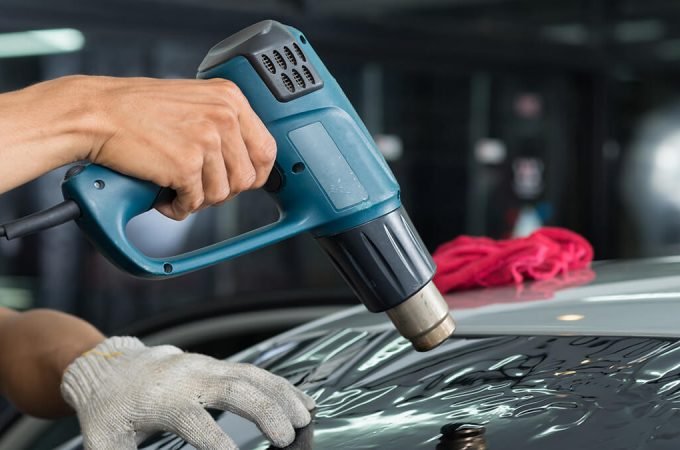
7 Branding Tips for Bloggers That Works
Being a blogger isn’t easy. There are many challenges that a blogger will face in his everyday life. Bloggers usually have to work with blank canvases and make it their own.
Today we’re here to teach you 7 branding tips that can make it easier to transform a blank canvas into a beautiful work of art filled with compelling content and eloquent design.
This article contains strategies to branding your blogs that you may not have even thought of yet. After reading this article, branding your blog will be a breeze for you.
#1 – Writing Tone and Style
Having a unique writing tone and style can help you grow your brand by making it easier to promote. Developing your style of writing can take a while, but it will all be worth it in the end.
Being unique is what makes you attractive. If you write the same way as someone else, then your site’s visitors will read someone else’s articles instead of yours. Get a basic idea of what style of writing you have and then stick to it and grow it until it’s perfectly refined.
#2 – Styles and Themes
You need good styles and themes for your website to look attractive to any viewers that may come upon it. Having unique themes can help your website stand out in the crowd.
Choose themes that are subtle enough not to distract the viewers but attractive enough to get their attention. There’s a “Goldilocks Zone” where a theme is not too bland, not too aggressive, but just right. Having a modern theme often works well for increasing site traffic.
#3 – Visuals and Content
People judge with their eyes. Having attractive visuals and interesting content will keep your viewers on your website for longer. From branding to marketing, good visuals will help you get noticed. Use attractive images for your blog posts.
Custom graphics can also make your content stand out and be more recognizable. Good visuals are also good when promoting social media sites.
Visual elements are often the first things that people see when a web page loads so if it isn’t attractive then you could end up with visitors who immediately lose interest as soon as the web page loads.
If you have trouble designing your own visual elements or custom content, then you should consider hiring freelance content creators. Freelance content creators can often supply you with premium content at an affordable price.
Related Article: Purposes and Strategies of Social Media Marketing
#4 – Color
Having a lot of color can help your website get noticed. That doesn’t mean that you should turn your website into a coloring book filled with every color you can imagine.
Subtlety is key.
Two tone designs work well for web pages. They are subtle enough to be easy on the eyes while being attractive enough to get the attention of anyone looking at the page. The images in the page should have a matching or similar color scheme. Having mismatching color schemes can be very off-setting for site visitors and could lessen the chances of them staying.
#5 – Having a Clear Message
You have to be straightforward with what your website is about. No matter how attractive and noticeable your website is, it’s all useless if it doesn’t get your message across.
Be as clear as you can with what the website is about especially when designing the homepage. If your visitors don’t understand what your site is about then they will close the tab and never return.
The visitors should already have a basic idea of what your site is about within the first few seconds of their arrival.
Having a clear and straightforward message can help your site’s visitors connect with your website and will make them interested enough to want to learn more about it.
#6 – Proper Typography
Typography is one of the most important aspects of web design. But what really is typography? Typography is the font type and color that you will be using to write content on your website.
Getting it wrong could leave your page too difficult to read and cause readers to leave. Your font should be clear and easy to read. Standard fonts are usually Georgia and Calibri with the font sizes being anywhere from twelve to fifteen.
If you’re unsure about what style of typography to use for your website, then just look up websites that talk about similar topics as yours and see what styles of typography they use. After looking at a few websites about similar topics, you should have a good idea of what style of typography to use for your website.
#7 – Good Layout
Having a good layout is very important when designing a website. Having a good layout will make it easier for visitors to navigate around your website.
It’s important to leave space in between your elements in order to make your web page easier to read. Good layouts will make the visitors feel more at home when viewing your website and will make it more likely for them to return.
People come back to what they enjoy so use a layout that every visitor can enjoy. Avoid cramming text and images tightly into one page as that can make your web pages look quite messy. Instead of putting all the information on one page, it’s always a good idea to make one page for each topic that you want to talk about.
Also Read: How to use Word-Press CMS Platform to Create a Website
If you follow these 7 tips, you’ll be able to turn your simple blog into a branded blog in no time. Blogging isn’t just about punching some square keys on a keyboard, it’s about knowsing what to write, how to write it, and knowing the proper strategies in order to succeed as a blogger.
Blogging may be complex but if you have focus, persistence and the will to succeed then you’ll get the hang of it eventually. You may not learn right away but blogging, like many things in life, has a learning curve. But once you’ve got it, you’ve got it. Just keep on blogging and don’t give up.
Author Bio – Daniel Shane is professional branding expert and digital marketing enthusiast. He works as a creative branding expert at Logo Orbit. Beside this, he’s a passionate blogger and loves to blog about the related topics. His twitter handle is @danielshane96






